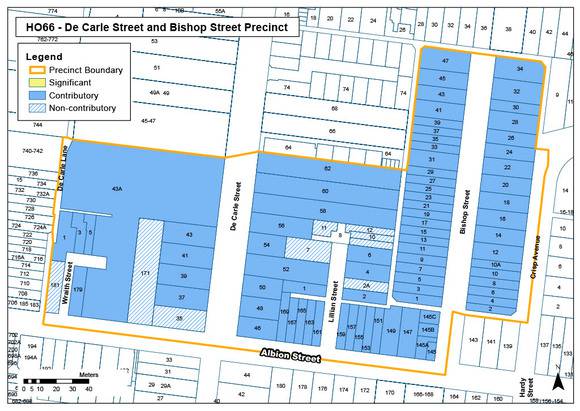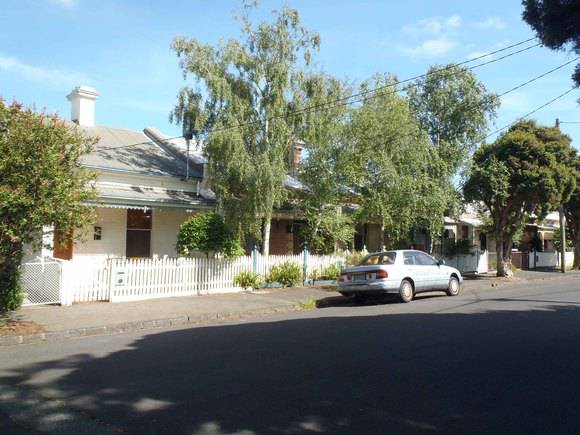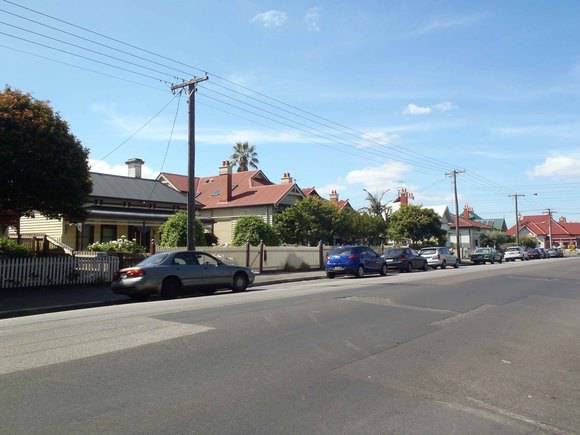| Back to search results » | Back to search page » |
|
De Carle Street & Bishop Street
Location37-43A & 46-62 DE CARLE STREET, 145-181 ALBION STREET, 1-47 & 2-34 BISHOP STREET, LILLIAN STREET, and 1-5 WRAITH STREET, BRUNSWICK, MORELAND CITY
File Number3510LevelIncluded in Heritage Overlay |
|
Statement of Significance
What is significant? How is it significant? Why is it significant? The De Carle Street / Bishop Street Precinct is of local historical significance for the concrete roadway constructed by sustenance workers, which is a rare remaining example of such employment generating works undertaken during the Great Depression. Non-Contributory properties include: Albion Street: 171 and 181. De Carle Street: 35.
The De Carle Street / Bishop Street Precinct, comprising houses at 145A, 145B, 145C and 145-181 Albion Street, 1-47 and 2-34 Bishop Street, 35-43A and 46-62 De Carle Street, Lillian Street and 1-5 Wraith Street.
The De Carle Street / Bishop Street Precinct is of local architectural and historical significance to the City of Moreland.
The De Carle Street / Bishop Street Precinct is of local architectural significance as a residential area which reflects several successive periods of development from the 1850s to the 1910s, including the 19th century terraces in Bishop Street. The De Carle / Bishop Street Precinct is predominately residential, with detached single-storey weatherboard Edwardian-era houses predominating, particularly in De Carle Street. In Bishop, Lillian, Albion and Wraith Streets, single-storey cottages and terraces comprise the majority of housing stock. The architecture of the area is reasonably diverse, from the early bluestone cottage in Albion Street to the Victorian Timber houses in De Carle Street.
Group
Residential buildings (private)
Category
Residential Precinct






